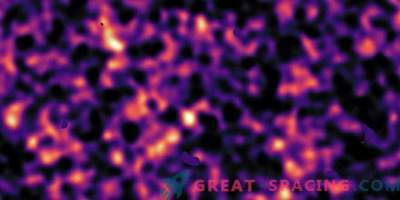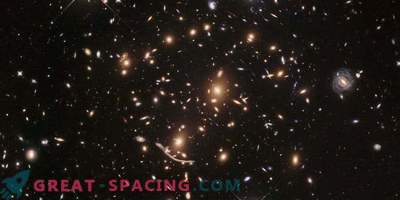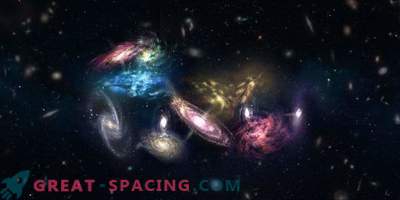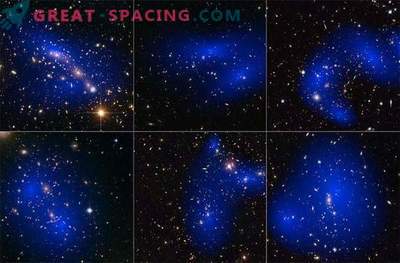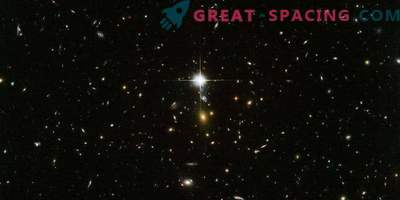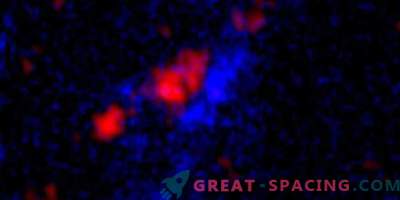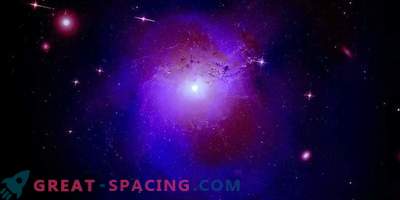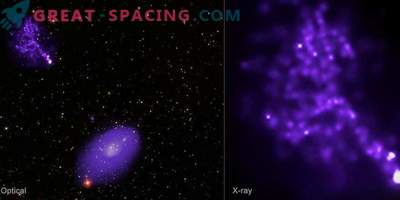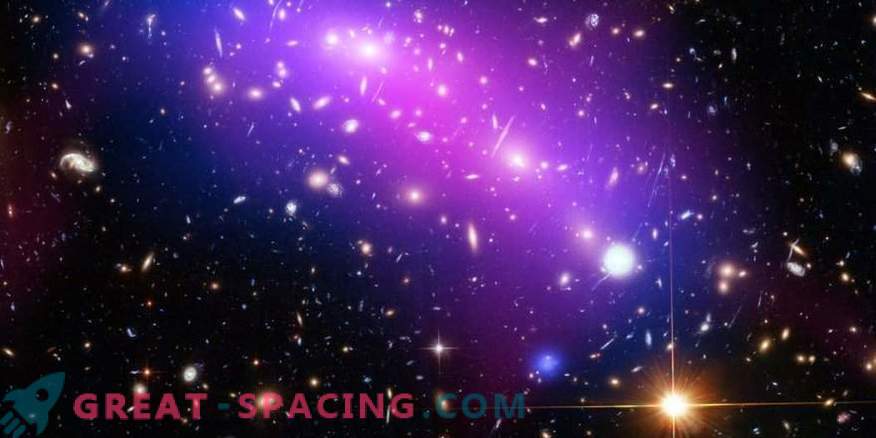
Young and massive galactic cluster observed in X-rays (blue), visible light (green) and infrared (red)
Surprisingly, the most ambitious things sometimes hardest to find. More than 20 years ago, an active study of distant galactic clusters began. One group in size is capable of reaching a quadrillion sun. But remote objects are too weak to observe.
But they are important to study, because they contain fragments of the primary universal structure and can give clues to solving the riddle of dark matter and dark energy. At the moment there is a catalog of 200 candidates for galactic clusters. If they are confirmed, we get one of the most distant.
Clusters are able to hold thousands of galaxies and trillions of stars that can be viewed in telescopes. In the X-ray review shows a hot gas. It is believed that approximately 85% of the mass of each cluster is hidden in the form of dark matter.
The scale of the space is displayed as a web of bright threads and dark voids. Galactic clusters are located at the intersection points of the filaments; therefore, they are the keys to the riddle of dark matter and dark energy. Both substances make up 95% of the entire Universe, but we see only indirect effects.
More about the properties tell remote galactic clusters. If we compare them with more approximate instances, we can trace the process of creation and evolution.
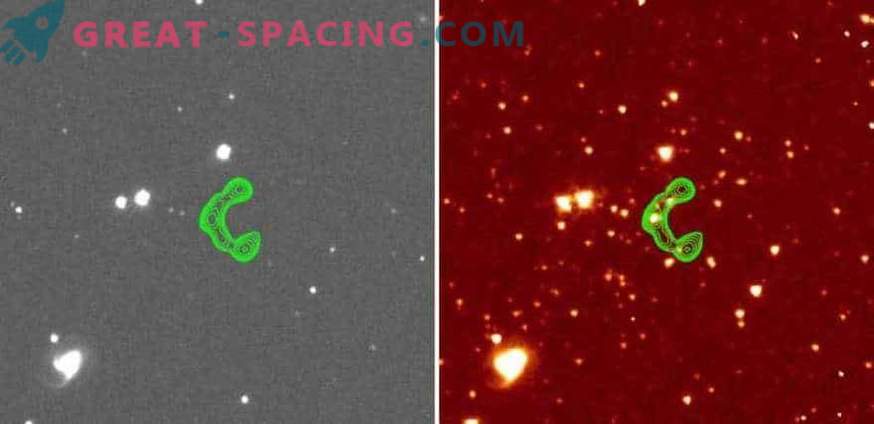
The image from the Sloan review (left) seems almost empty, but the Spitzer image (right) displays dozens of distant galaxies. Radio wave map (green lines) shows control galaxies
The further the cluster is, the more difficult it is to consider. Conventional telescopes should look at one spot for a long time in order to catch the necessary amount of light. 20 years was enough to accumulate a decent directory.
It was a long journey, but scientists used clues. The first step is to search for supermassive black holes hiding in galactic centers. They absorb the material and release bright streams that are able to stretch beyond the galaxy line. It turned out that about 2000 similar marks were found in the sky. Then they used archival images from the Sloan Digital Sky Survey and identified the candidates.
Then the selection was carried out through the Spitzer and 650 applicants were led through it. The computer derived the number of galaxies in each frame and compared it with a typical number to detect excessive density.
Now researchers must determine the distance to each galaxy in order to confirm that the group is real. To do this, use the 4.3-meter telescope Discovery Channel, as well as the Hubble and 10-meter Keck in Hawaii.
